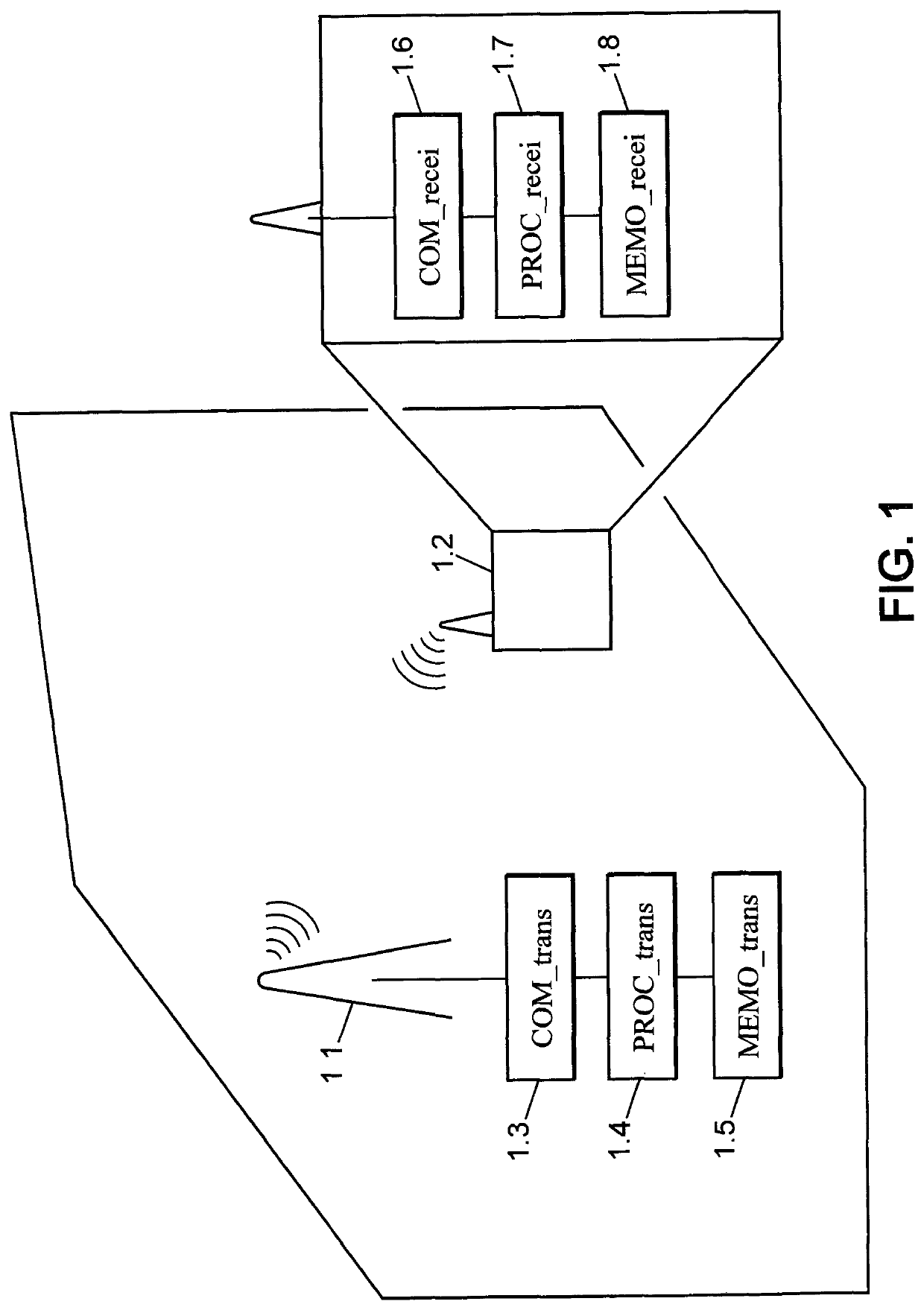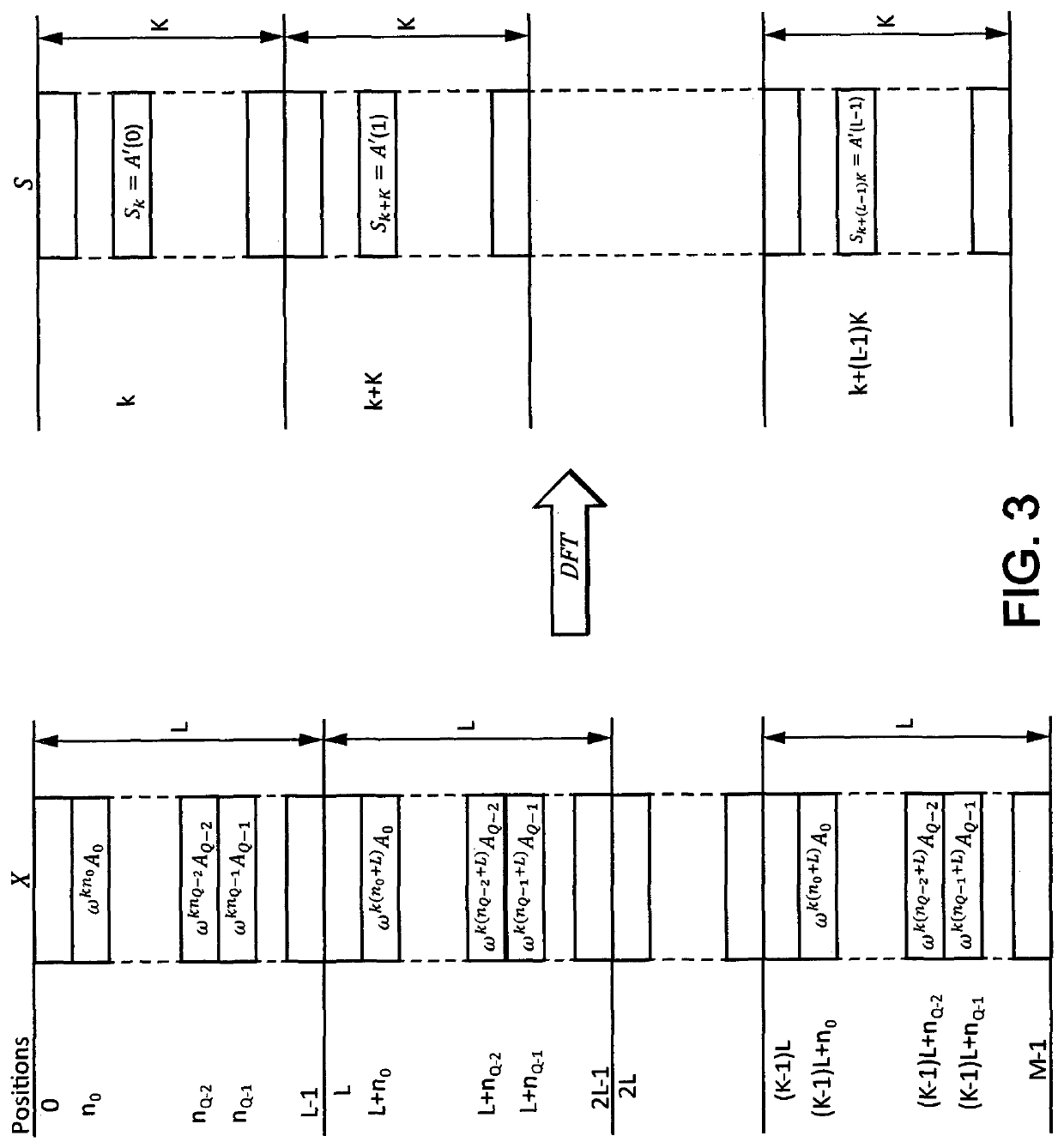Symbols incorporation scheme for DFT-S-OFDM
a technology of symbol incorporation and dft, applied in the field of telecommunication system, can solve the problems of high papr, important interference, and important loss of spectral efficiency, and achieve the effect of improving the situation
- Summary
- Abstract
- Description
- Claims
- Application Information
AI Technical Summary
Benefits of technology
Problems solved by technology
Method used
Image
Examples
Embodiment Construction
own a transmitter 1.1 transmitting a radio signal to a receiver 1.2. The receiver 1.2 is in the cell of the transmitter 1.1. This transmission is a DFTsOFDM based transmission in the context of OFDM based system. In this example the transmitter 1.1 is a fixed station and the receiver 1.2 is a mobile terminal, in the context of LTE they would be named a base station and a user equipment. The transmitter 1.1 can as well be the mobile terminal and the receiver 1.2 a fixed station.
[0102]The transmitter 1.1 comprises one communication module (COM_trans) 1.3, one processing module (PROC_trans) 1.4 and a memory unit (MEMO_trans) 1.5. The MEMO_trans 1.5 comprises a non-volatile unit which retrieves the computer program and a volatile unit which retrieves symbol incorporation parameters. The PROC_trans 1.4 is configured to transmit the Q symbols according to the invention. The COM_trans 1.3 is configured to transmit to the receiver 1.2 the radio signal. The communication module 1.3, the proc...
PUM
 Login to View More
Login to View More Abstract
Description
Claims
Application Information
 Login to View More
Login to View More - R&D
- Intellectual Property
- Life Sciences
- Materials
- Tech Scout
- Unparalleled Data Quality
- Higher Quality Content
- 60% Fewer Hallucinations
Browse by: Latest US Patents, China's latest patents, Technical Efficacy Thesaurus, Application Domain, Technology Topic, Popular Technical Reports.
© 2025 PatSnap. All rights reserved.Legal|Privacy policy|Modern Slavery Act Transparency Statement|Sitemap|About US| Contact US: help@patsnap.com



